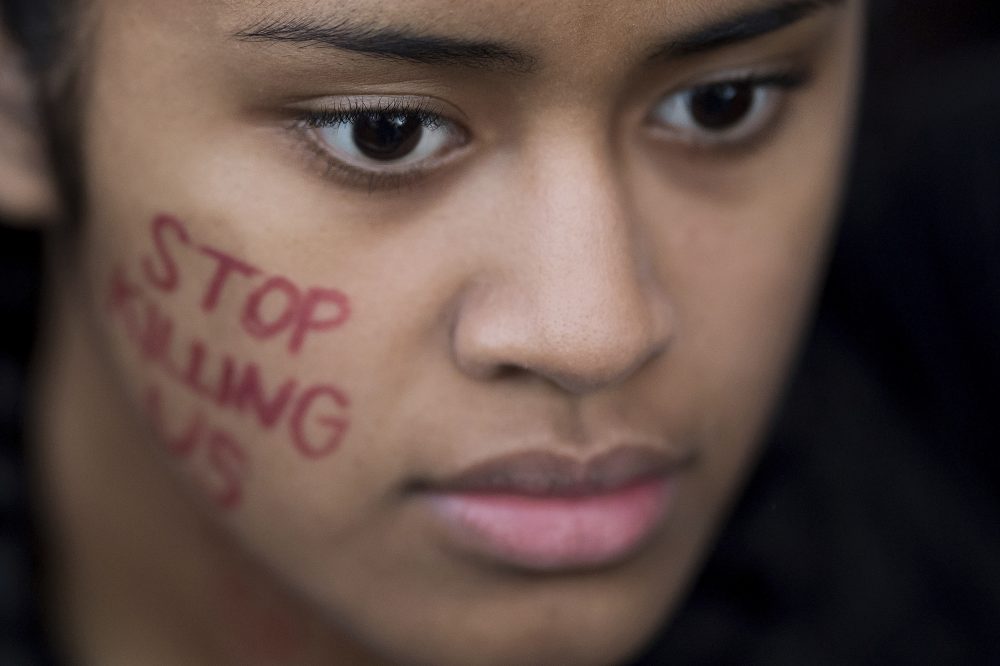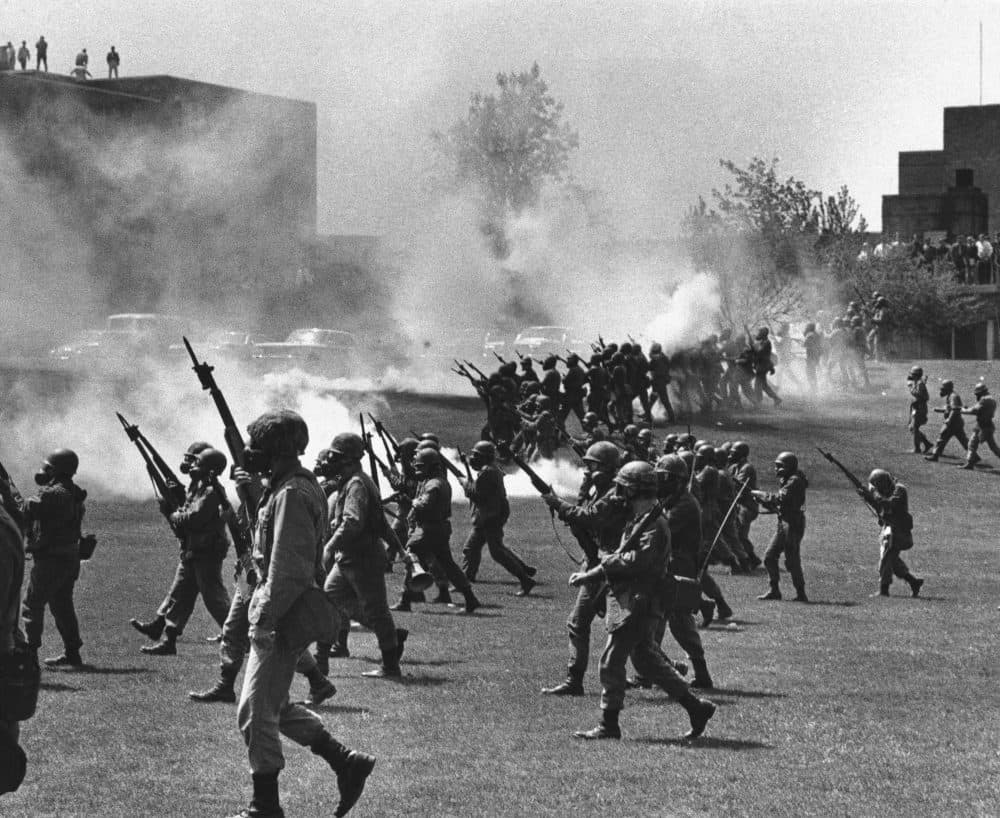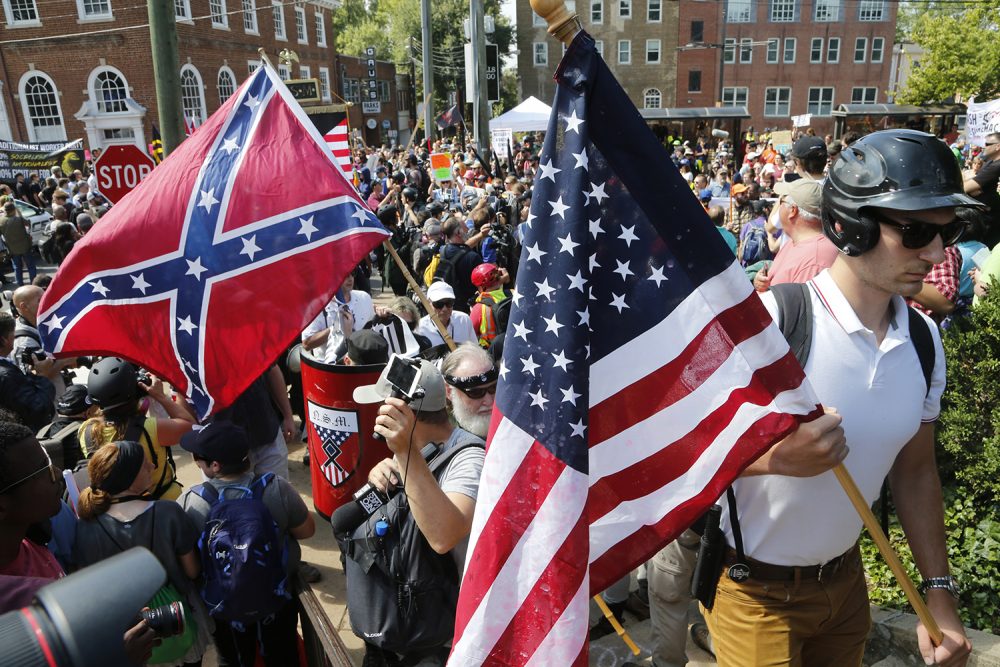Advertisement
Commentary
Charlottesville Rips Open The Half-Healed Wounds Of History

As I scan obsessively through media responses to Charlottesville, my husband leans into the room. “It has brought back Kent State for me,” he offers, voice slightly breaking. I nod. On May 4, 1970, the National Guard fired on students protesting the Vietnam War, and killed four of them. The new violence stirs old memories. The killing of Heather Heyer partly feels like déjà vu.
If, as my husband and I did, you lived through the '60s and early '70s, the violence in Charlottesville felt uncanny. It delivered the shock of a new event, yet many ghosts lurked within it. I was flooded with so much emotion when I first learned of the car raging into the crowd that I quickly posted a comment on Facebook. The speed of my post surprised me, as did the speed of the response from friends who saw it. The majority were people of a certain age, and I realized our reactions arrived, birds startled into flight, on the wings of old losses.
We’d been in high school or college in the 1960s. And we shared the decade’s bloody history. Time has flattened the era into film, history books and fading pictures. But living through it — all the Civil Rights murders, the assassinations, the 1968 Democratic convention, the riots, the war casualties — didn’t just kill or injure participants and bystanders, it formed a crucible that melted and then molded a generation.
Little surprise then that these latest events brought forward, once again, old political feelings — fear, anger, indignation, helplessness — roughly shaken from their half repose. Those aching emotions that accompany social turmoil, and that during the '60s surrounded many of us continually — like chords overplayed on some cosmic instrument — quieted for me in the mid-'70s, after the Vietnam war ended and the country gradually returned to something seemingly more settled and workaday.

We still followed political events, protested racism and the nuclear arms race, the War in Iraq, canvassed door-to-door each election — but however upset we were about the particular circumstances, nothing felt as bad — as broadly and inescapably painful — as the '60s had felt.
Until last November’s election.
However problematic the new administration’s policies on immigration, climate change, health care, education and on and on, my deeper sense of dread, I realized, stemmed from Trump’s meta-message; his promises to rewind history.
One evening this past January, while my family was watching the movie “Selma” together, I was struck by an insight as I saw the scene recreating the standoff between President Johnson and Gov. George Wallace. I grasped that Trump’s campaign had been all about picking up a very old, ugly and rotten thread, and weaving it back into our national tapestry. Trump was — consciously or not — offering up a needlepoint tableau of our country as it would have been had Wallace bested Johnson, and had LBJ’s — and the majority of the nation’s — push for more integration, voting rights and the legal end of our long segregation — not carried the day.
Although racism endures in the United States — in salaries, imprisonments, school access, police victimization, redlining, net worth — among other areas, the train for Jim Crow-style apartheid has definitively left the station.

The neo-Nazis and KKK members have been adequately held in check for over half a century now. Had Trump, Steve Bannon and Sebastian Gorka — men whose power far exceeds their humanity — not spent so much energy tossing kerosene and matches all over our nation’s worst instincts, the relative peace might have continued. Instead, the Far Right has been encouraged to act out a violent and atavistic delusion: the notion that the white male hegemony, supported by racial hate (including rabid anti-Semitism) and repression, represents a lost Eden. The myth that the superior social status of white skin is delivered at birth and is indelible would be a pathetic notion, were it not a rattlesnake that still sinks its poison into handy flesh.
The pain behind this myth can be respected, but the movement of the nation toward something fairer and more decent must never be placed in doubt. History is a body — carried in varying degrees within each of us — bearing many scars and half healed-wounds. Ripping them open so cynically, as the Trump campaign and White House have done — to feed vile lies isn’t clever, it’s tragic.
